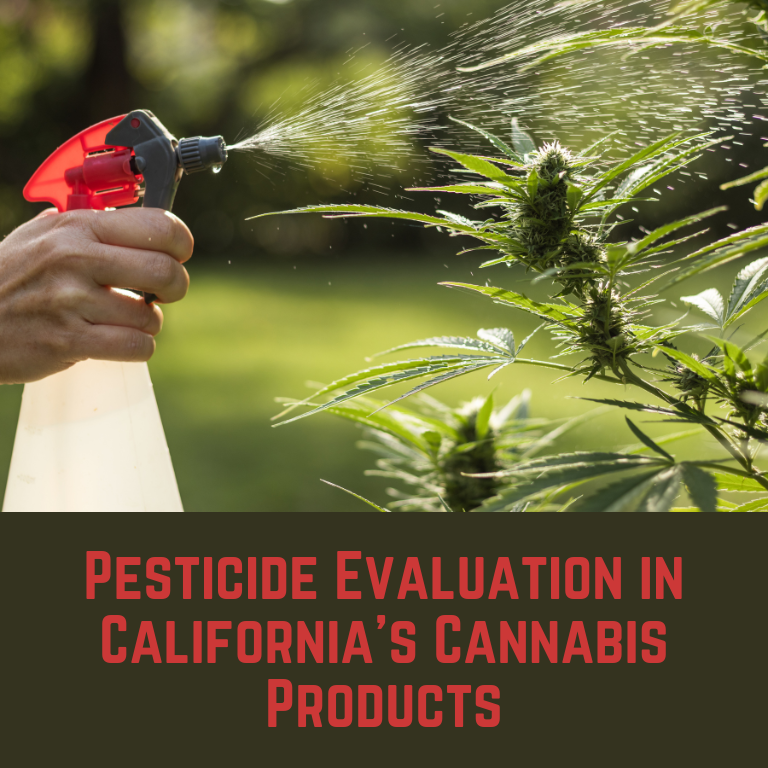Pesticide Evaluation in California’s Cannabis Products

California Cannabis: Pesticide Presence Evaluation
The legalization of cannabis in California has brought the state’s cannabis industry under intense scrutiny, particularly concerning the safety and quality of the products available to consumers. One of the most pressing issues is the presence of pesticides in cannabis products. Pesticides, used to protect crops from pests and diseases, can pose significant health risks if not properly managed. This article explores the evaluation of pesticide presence in California’s cannabis industry, the implications for public health, and the measures being taken to ensure product safety.
The Role of Pesticides in Cannabis Cultivation
Pesticides are commonly used in agriculture to protect crops from insects, mold, and other pests. In cannabis cultivation, particularly in large-scale operations, pesticides help maintain crop health and yield. However, the use of pesticides in cannabis is complicated by the fact that the plant is often consumed in forms that do not involve high-heat processing, such as smoking, vaporizing, or ingesting, which can lead to direct exposure to pesticide residues.
Types of Pesticides Used: Cannabis cultivators may use various types of pesticides, including insecticides, fungicides, and herbicides. These can be synthetic or organic, with organic options often perceived as safer but not always free from health risks.
Regulatory Concerns: California, through the California Department of Pesticide Regulation (DPR) and the Bureau of Cannabis Control (BCC), regulates the use of pesticides in cannabis cultivation. Only certain pesticides that are deemed safe and appropriate for use on cannabis are permitted, and they must be used according to strict guidelines.
Health Risks Associated with Pesticide Residues
Pesticide residues in cannabis products can pose various health risks, especially with chronic exposure. These risks include respiratory problems, skin irritation, and potentially more serious conditions such as neurotoxicity or carcinogenic effects, depending on the chemical composition of the pesticides used.
Vulnerable Populations: Consumers who are particularly vulnerable to pesticide exposure include medical cannabis patients, the elderly, pregnant women, and individuals with compromised immune systems. For these groups, exposure to pesticide residues can exacerbate existing health issues or lead to new health problems.
Inhalation vs. Ingestion: The method of cannabis consumption significantly affects the level of exposure to pesticide residues. Inhalation, through smoking or vaping, can lead to more immediate and potentially more concentrated exposure to these chemicals compared to ingestion, where the digestive process can partially mitigate exposure.
Evaluating Pesticide Presence in Cannabis Products
To protect consumers, rigorous testing for pesticides in cannabis products is essential. In California, cannabis products must undergo mandatory testing for a range of contaminants, including pesticides, before they can be sold.
Testing Standards and Protocols: California has established stringent testing standards for pesticides in cannabis, which are among the most comprehensive in the country. These standards require testing for a list of over 60 pesticides, with established action limits for each. Products that exceed these limits are not permitted for sale and must be destroyed or remediated.
Testing Methods: Cannabis testing laboratories employ advanced analytical techniques, such as gas chromatography-mass spectrometry (GC-MS) and liquid chromatography-tandem mass spectrometry (LC-MS/MS), to detect and quantify pesticide residues. These methods are highly sensitive and capable of detecting pesticides at very low levels, ensuring consumer safety.
Challenges in Testing: Despite rigorous testing requirements, challenges remain in ensuring consistent and accurate testing. Variability in laboratory testing results, differences in testing equipment and methodologies, and potential conflicts of interest within the industry can complicate the reliability of pesticide testing. Regular audits and accreditation of testing labs are critical to maintaining testing integrity.
Regulatory Actions and Industry Compliance
To address the issue of pesticide presence in cannabis, California regulators have implemented several measures aimed at ensuring compliance and protecting consumers.
Strict Compliance and Enforcement: The BCC, in collaboration with other state agencies, conducts regular inspections and audits of cannabis cultivation and production facilities. These inspections help ensure that businesses adhere to pesticide regulations and that products reaching consumers are safe.
Public Health Campaigns: Public health campaigns aimed at educating consumers about the risks associated with pesticide residues in cannabis products are essential. These campaigns also inform consumers about the importance of purchasing products from licensed and regulated sources.
Penalties for Non-Compliance: The state imposes significant penalties for non-compliance with pesticide regulations, including fines, product recalls, and license revocation. These measures serve as a deterrent against the use of unauthorized pesticides and encourage compliance with safety standards.
Research and Development: Ongoing research into safer pest management practices and the development of new testing technologies are crucial for advancing the safety of cannabis products. Innovations in organic and integrated pest management (IPM) strategies offer potential alternatives to traditional chemical pesticides.
The evaluation of pesticide presence in California’s cannabis industry is a critical component of ensuring consumer safety and maintaining the integrity of the legal cannabis market. While significant progress has been made in establishing testing standards and regulatory frameworks, ongoing challenges in testing reliability and industry compliance remain. By continuing to refine regulations, enhance testing protocols, and promote public awareness, California can help protect consumers and set a standard for cannabis safety nationwide.











